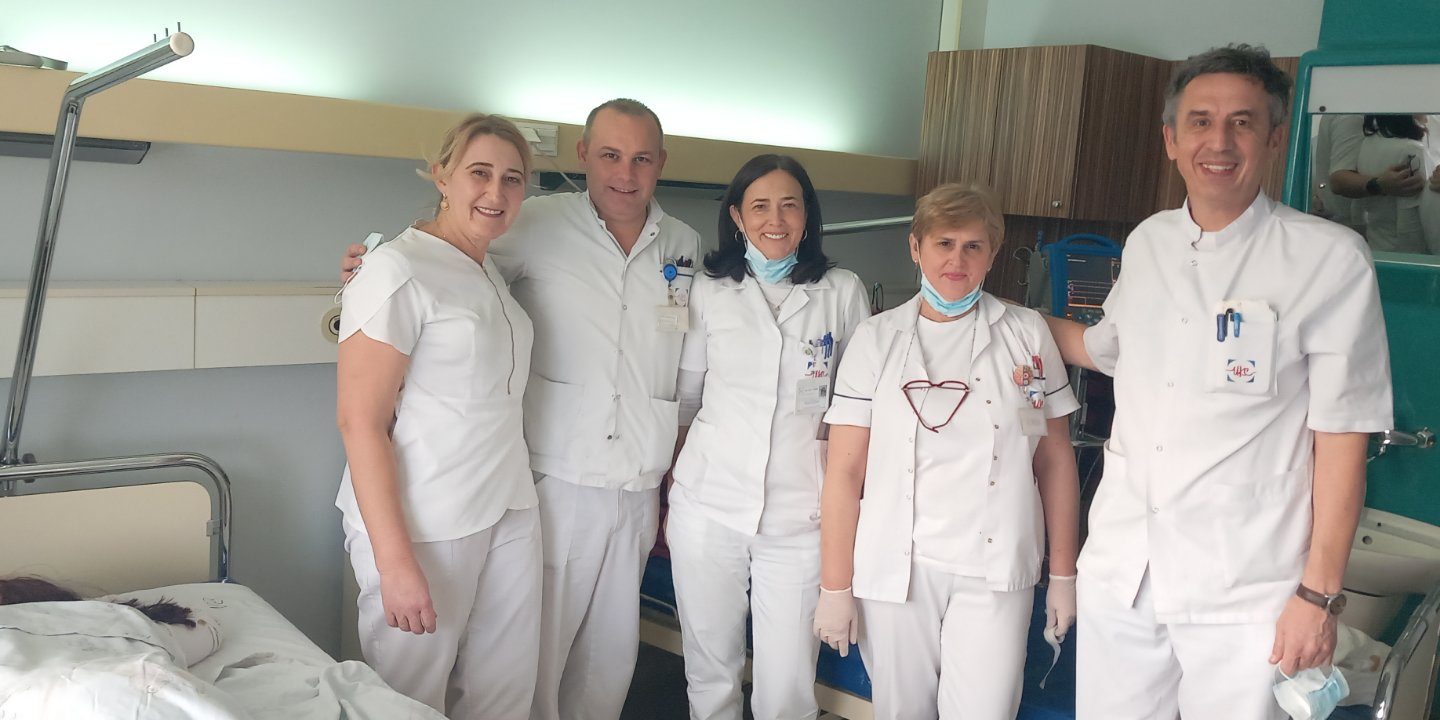At the University Clinical Center Tuzla, for the first time in Bosnia and Herzegovina, an adult patient diagnosed with spinal muscular atrophy has been treated with a drug containing the active substance nusinersen. This medication belongs to a class of therapies known as antisense oligonucleotides.
Notably, the same drug was administered last year at the Children’s Clinic of University Clinical Center Tuzla to a 1.5-month-old infant diagnosed with spinal muscular atrophy. The diagnosis was established through a newborn screening test, subsequently confirmed by molecular genetic analysis.
According to Prof. Dr. Renata Hodzić, head of the Department of Clinical Neurophysiology, spinal muscular atrophy (SMA) is an autosomal recessive neuromuscular disorder. It is characterized by the degeneration of motor neurons in the anterior horn of the spinal cord, caused by a deficiency of a critical protein known as survival motor neuron (SMN) protein. This protein deficiency leads to the loss of nerve cells in the spinal cord, resulting in muscle weakness, particularly in the shoulders, hips, thighs, and upper back.
“Spinal muscular atrophy (SMA) primarily results from a complete lack of the SMN1 gene,” explained Prof. Dr. Hodzić. “Fortunately, in addition to the telomeric SMN1 gene, individuals also possess a variable number of copies of the centromeric SMN2 gene, which has a similar structure and can contribute up to 10% of the total SMN protein. The difference between the SMN1 and SMN2 genes is minimal, located within exon 7.
The number of SMN2 gene copies significantly influences the severity, form, and prognosis of the disease. The clinical spectrum ranges from mild proximal muscle weakness with onset in middle age to severe, generalized muscle weakness and respiratory impairment evident at birth.
In recent years, we have entered a new era in the therapeutic management of spinal muscular atrophy. The first drug approved for its treatment is Spinraza (nusinersen),” Prof. Hodzić noted.
The drug works by enhancing the body’s production of survival motor neuron (SMN) protein, which is deficient in individuals with spinal muscular atrophy. This mechanism helps reduce nerve cell loss and can potentially improve muscle strength.
As explained by Prof. Dr. Aida Šehanović, head of the Department of Neurology, nusinersen is a form of antisense oligonucleotide therapy. It utilizes short nucleotide sequences designed to bind to specific regions of a gene, thereby modifying its expression to restore SMN protein production.
“Nusinersen targets the SMN2 gene to enhance the production of full-length SMN protein, compensating for the deficiency caused by the loss of SMN1,” explained Prof. Dr. Šehanović.
Approved by the FDA in 2016 and the European Medicines Agency in 2017, nusinersen is used to treat spinal muscular atrophy in both children and adults. It is also registered with the Medicines Agency of Bosnia and Herzegovina. The recommended dosage is 12 mg (5 ml) per administration.
Treatment should begin as early as possible after diagnosis. The regimen includes four loading doses on days 0, 14, 28, and 63, followed by a maintenance dose administered once every four months.
The drug was administered to a 42-year-old patient with spinal muscular atrophy who has been wheelchair-bound for the past ten years due to disease progression. The treatment was approved by the Brčko District Fund, and the patient was referred to Univrsity Clinical Center Tuzla for the procedure.
“Through coordinated efforts by the University Clinical Center Tuzla Management, the Hospital pharmacy, the Clinic for Anesthesiology and Resuscitation, and the Clinic for Neurology, the preparation and administration of the first dose of Spinraza (nusinersen) via intrathecal injection were successfully completed,” stated Prof. Dr. Šehanović.
Although the procedure was technically challenging due to spinal column changes associated with the disease, it was carried out without complications. The patient is in good condition, and the next dose is scheduled for administration in two weeks.
The Director of University Clinical Center Tuzla, Prof. Dr. Šekib Umihanić, expressed his satisfaction with the introduction of innovative therapeutic procedures. “At Clinical Center Tuzla, our commitment is to continuously introduce new diagnostic and therapeutic approaches to enhance medical services for all patients. The education and training of our staff not only expand their knowledge, abilities, and skills but also create the foundation for implementing the most advanced treatment methods,” emphasized Prof. Dr. Umihanić.







